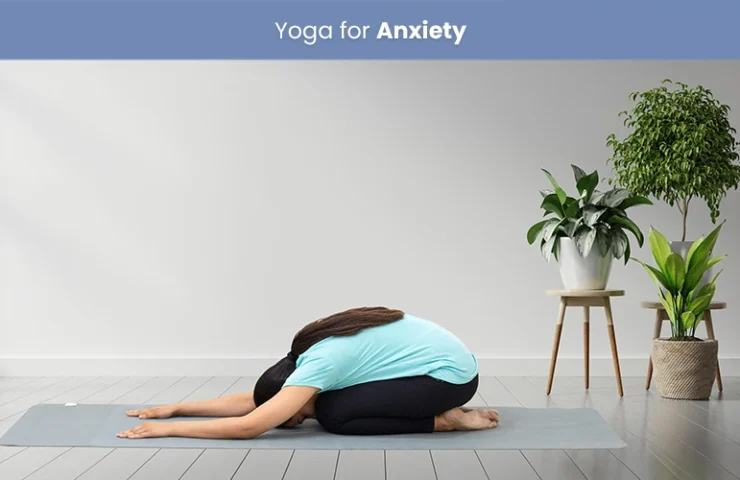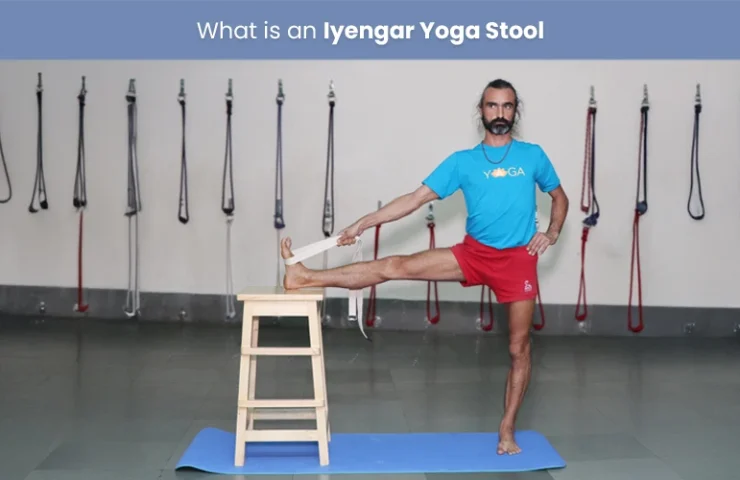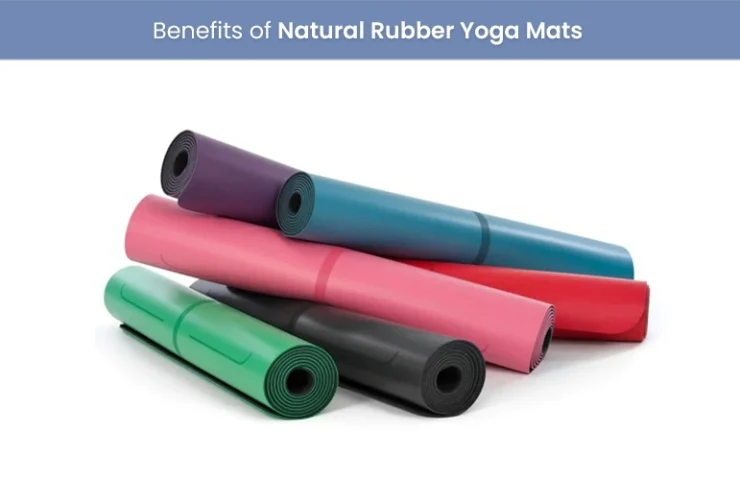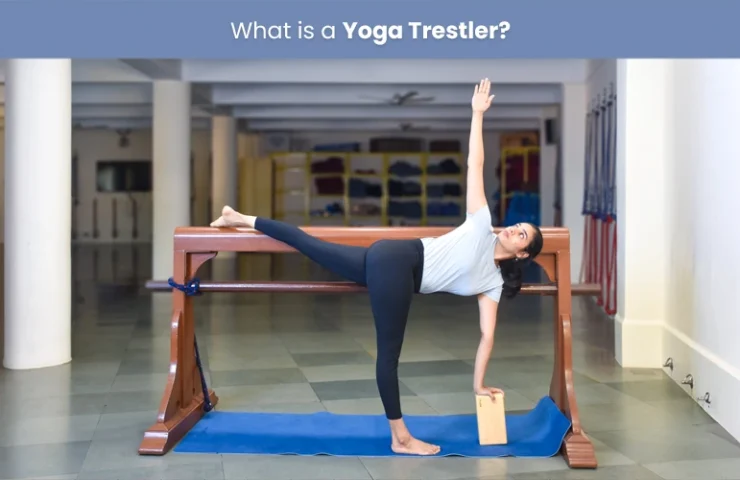Yoga – a practice synonymous with flowing movements and challenging postures on the floor. But what if you’re someone who finds traditional yoga poses difficult or inaccessible? Enter chair yoga, a gentle and adaptable form of yoga designed specifically for those who can’t comfortably practice on a mat.
This blog will delve into the world of chair yoga, exploring its history, benefits, and how you can easily incorporate it into your routine. So, whether you’re a seasoned yogi seeking a low-impact practice or a complete beginner, chair yoga offers a welcoming and accessible pathway to improved flexibility, strength, and overall well-being.
A Look Back: The History of Chair Yoga
Chair yoga’s origins can be traced back to the 1980s and 1990s, when yoga teachers like Gail Edelberg and Richard Goldberg began adapting yoga postures for individuals with limitations. Their vision was to make yoga accessible to a wider audience, particularly those with physical restrictions or older adults.
Chair yoga draws inspiration from various yoga styles, including Iyengar yoga, known for its use of props for alignment and support. This focus on modifications and the use of a chair as a supportive tool allows individuals of all abilities to experience the benefits of yoga.
Who Can Benefit from Chair Yoga?
The beauty of chair yoga lies in its inclusivity. Here are some groups who can particularly benefit from this practice:
- Seniors: Chair yoga provides a safe and supported way for older adults to maintain flexibility, improve balance, and enhance overall well-being.
- Individuals with Physical Limitations: Those with injuries, arthritis, or other physical limitations can find chair yoga a gentle and adaptable way to improve their strength and range of motion.
- Pregnant Women: Chair yoga offers a safe and effective way to stay active during pregnancy, promoting flexibility and easing common pregnancy discomforts.
- People New to Yoga: Chair yoga provides a gentle introduction to yoga postures and breathing techniques, making it an excellent starting point for beginners.
Unlocking Your Potential: Health Benefits of Chair Yoga
Don’t underestimate the power of chair yoga! This practice offers a multitude of benefits for both your physical and mental health:
- Improved Flexibility and Range of Motion: Chair yoga postures gently stretch and lengthen muscles, improving overall flexibility and range of motion. This can lead to better posture and a wider range of movement in daily activities.
- Enhanced Strength and Balance: Holding poses while seated or using the chair for support helps build strength in the legs, core, and upper body. Improved balance can significantly reduce the risk of falls, especially for older adults.
- Stress Reduction and Relaxation: Chair yoga incorporates deep breathing exercises and mindful movement, promoting relaxation and stress reduction. This can lead to improved sleep, better focus, and a more positive outlook.
- Increased Energy Levels: Regular chair yoga practice can boost energy levels and combat fatigue, leaving you feeling revitalized.
- Improved Mood and Well-being: The combination of physical movement, breathwork, and relaxation can positively impact mood, reduce anxiety, and enhance overall well-being.
Basic Chair Yoga Poses for Everyone
Ready to give chair yoga a try? Here are some basic poses to get you started:
- Seated Mountain Pose (Parvatasana): Sit tall with your feet flat on the floor, hip-width apart. Engage your core and lengthen your spine. Take a few deep breaths, focusing on your posture.
- Seated Side Bends (Parsvakonasana): Reach your right arm overhead, then gently bend to the left side, reaching your left hand towards the floor or the side of the chair. Hold for a few breaths, then repeat on the other side.
- Seated Eagle Arms (Garudasana): Cross your right arm over your left arm, bringing your palms together. Lift your arms overhead, keeping your elbows slightly bent. Hold for a few breaths, then repeat with the opposite arm on top.
- Seated Cat-Cow (Marjaryasana-Bitilasana): Inhale and arch your back, lifting your chest and gazing upwards (cow pose). Exhale, round your spine, tucking your chin to your chest (cat pose). Repeat for several cycles.
- Seated Forward Fold (Paschimottanasana): Hinge at your hips and fold forward, reaching your hands towards your feet or the floor. Hold for a few breaths with a flat back.
Getting Started with Chair Yoga: Your Guide to a Fulfilling Practice
Now that you’re familiar with the benefits and basic poses, here’s how to get started with chair yoga:
Choosing the Right Chair:
Ensure the chair height allows your knees to bend at a 90-degree angle with your feet flat on the floor. Avoid chairs with wheels or swivel bases, as they can compromise your stability. Instead, one can use Iyengar Yoga Chair as it helps in achieving proper alignment and also offers support. For a detailed guide on Iyengar Yoga Chair poses and how to use them effectively, check out our comprehensive guide for beginners.
Necessary Props:
While a chair is the primary tool, some props can enhance your practice:
- Yoga block: A yoga block can provide extra support in poses or add height for modifications.
- Yoga Belt: A yoga belt can help you achieve deeper stretches or improve your balance in certain poses.
- Blanket: A folded blanket can be placed under your knees for added comfort or used for support in seated twists.
Finding a Class:
There are several ways to find a chair yoga class:
- Local yoga studios: Many studios offer chair yoga classes specifically designed for beginners or those with limitations.
- Community centers or senior centers: These centers often host fitness classes for older adults, and chair yoga might be one of the options.
- Online classes: Numerous online platforms offer chair yoga classes at various levels. Look for classes with certified instructors and clear demonstrations.
Chair Yoga Tips for Beginners
Embrace the journey! Here are some helpful tips to make your chair yoga experience even more enjoyable:
- Listen to your body: Don’t push yourself beyond your limits. Modify poses as needed and take breaks when necessary.
- Focus on your breath: Deep, rhythmic breathing enhances the practice and promotes relaxation.
- Maintain proper form: While modifications are encouraged, focus on alignment and proper posture to avoid injury.
- Start slowly and gradually increase intensity: As you gain strength and flexibility, you can gradually increase the duration and complexity of your practice.
- Wear comfortable clothing: Choose loose-fitting clothing that allows for freedom of movement.
- Most importantly, have fun! Chair yoga is a journey of self-discovery and well-being. Enjoy the process and celebrate your progress.
Conclusion: A Chair Awaits You on the Path to Well-being
Chair yoga is more than just postures on a chair – it’s a gateway to a healthier, happier you. Whether you’re a seasoned yogi seeking a gentle practice or a complete beginner, chair yoga offers a welcoming and inclusive way to improve your flexibility, strength, and overall well-being. So, find a sturdy chair, take a deep breath, and embark on a journey of self-discovery and well-being.
Remember, with dedication and a little practice, chair yoga can become a transformative part of your life.






0 Comments for “What is Chair Yoga? A Gentle Path to Flexibility and Well-being”